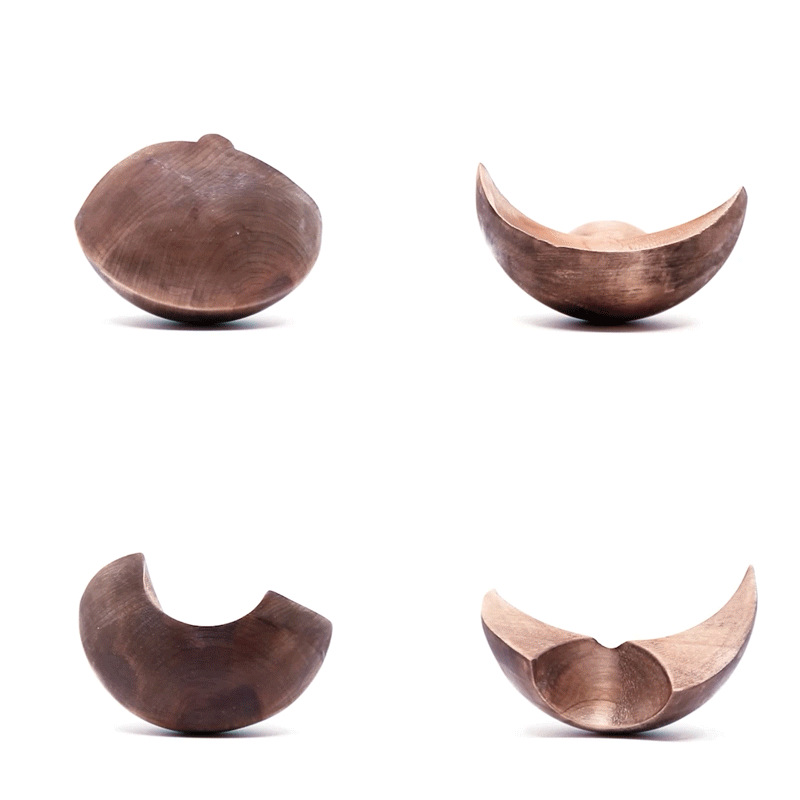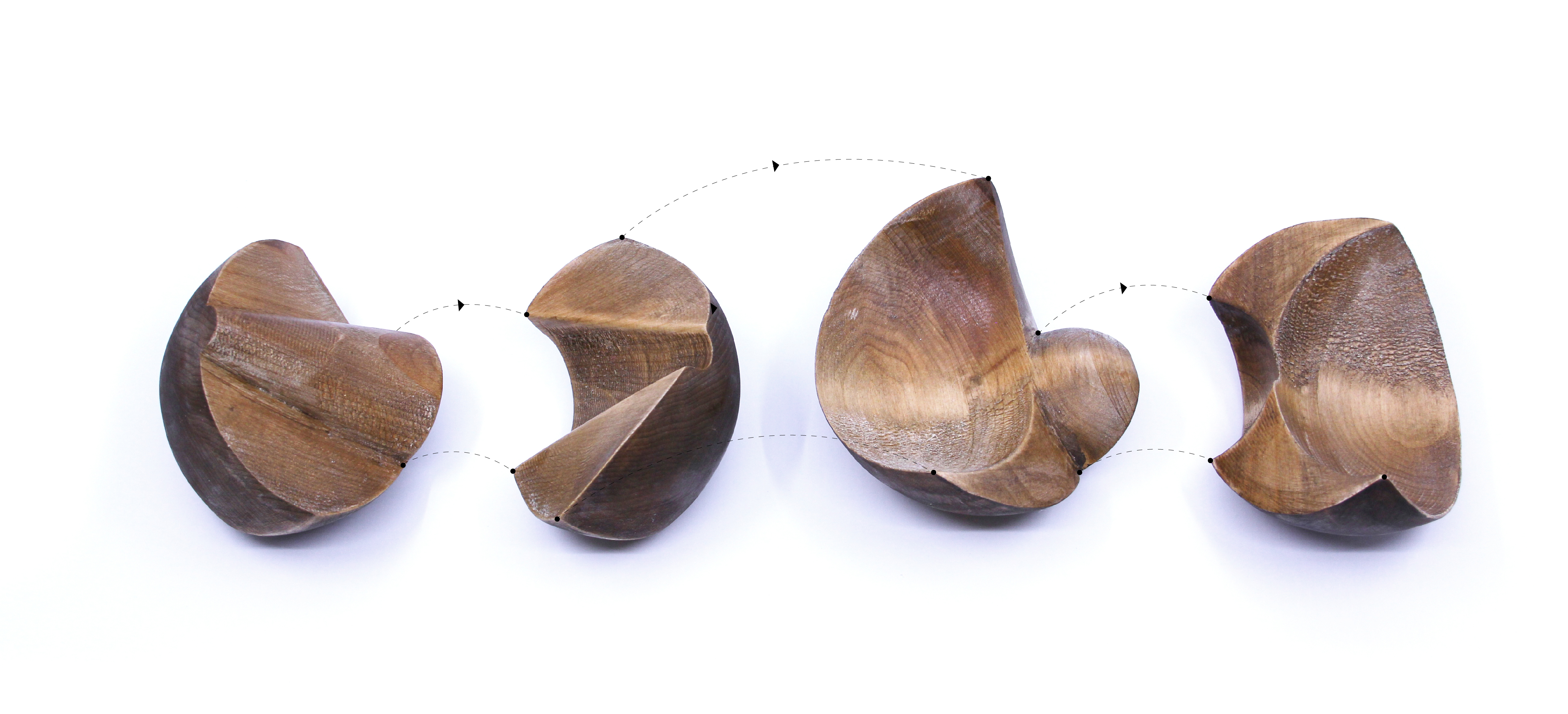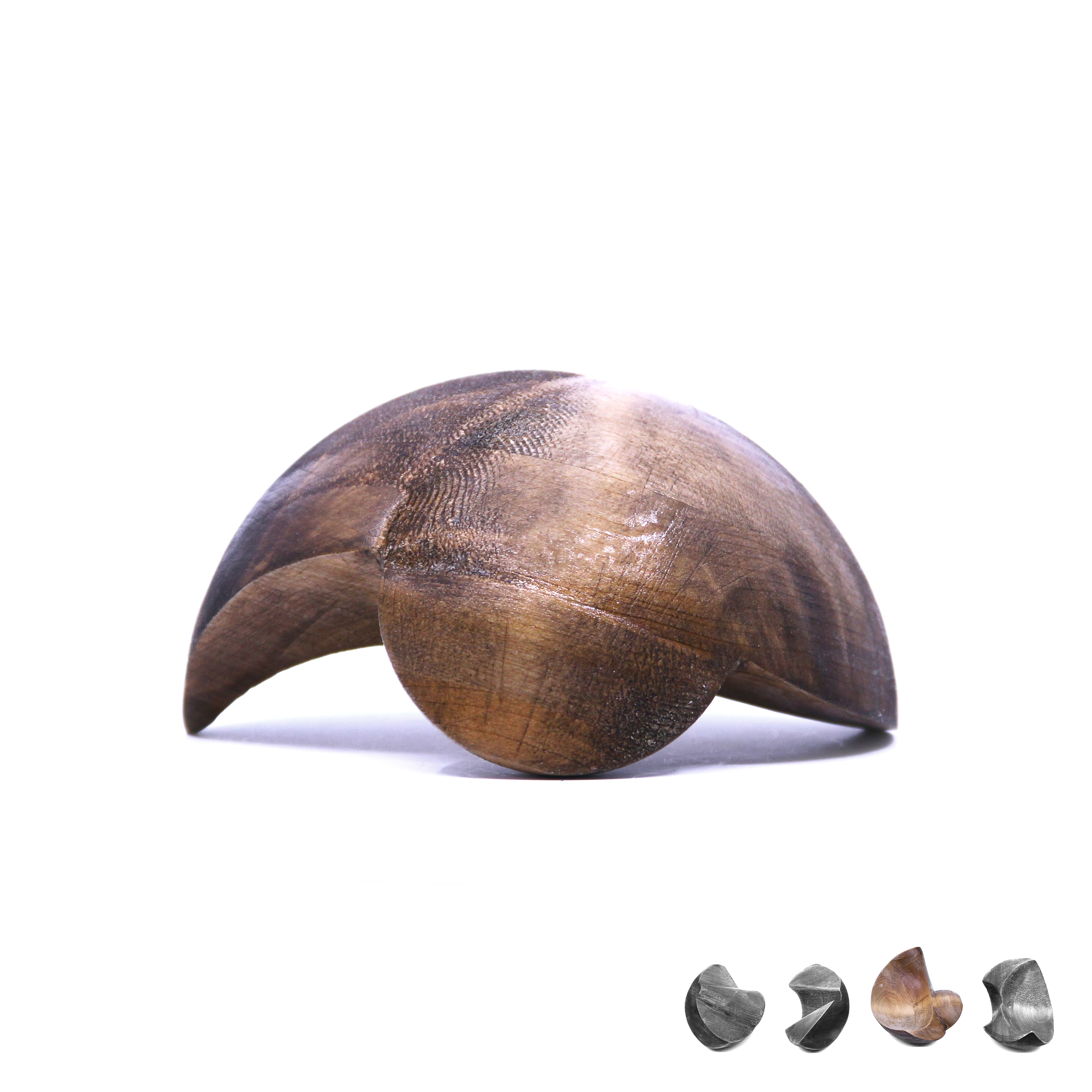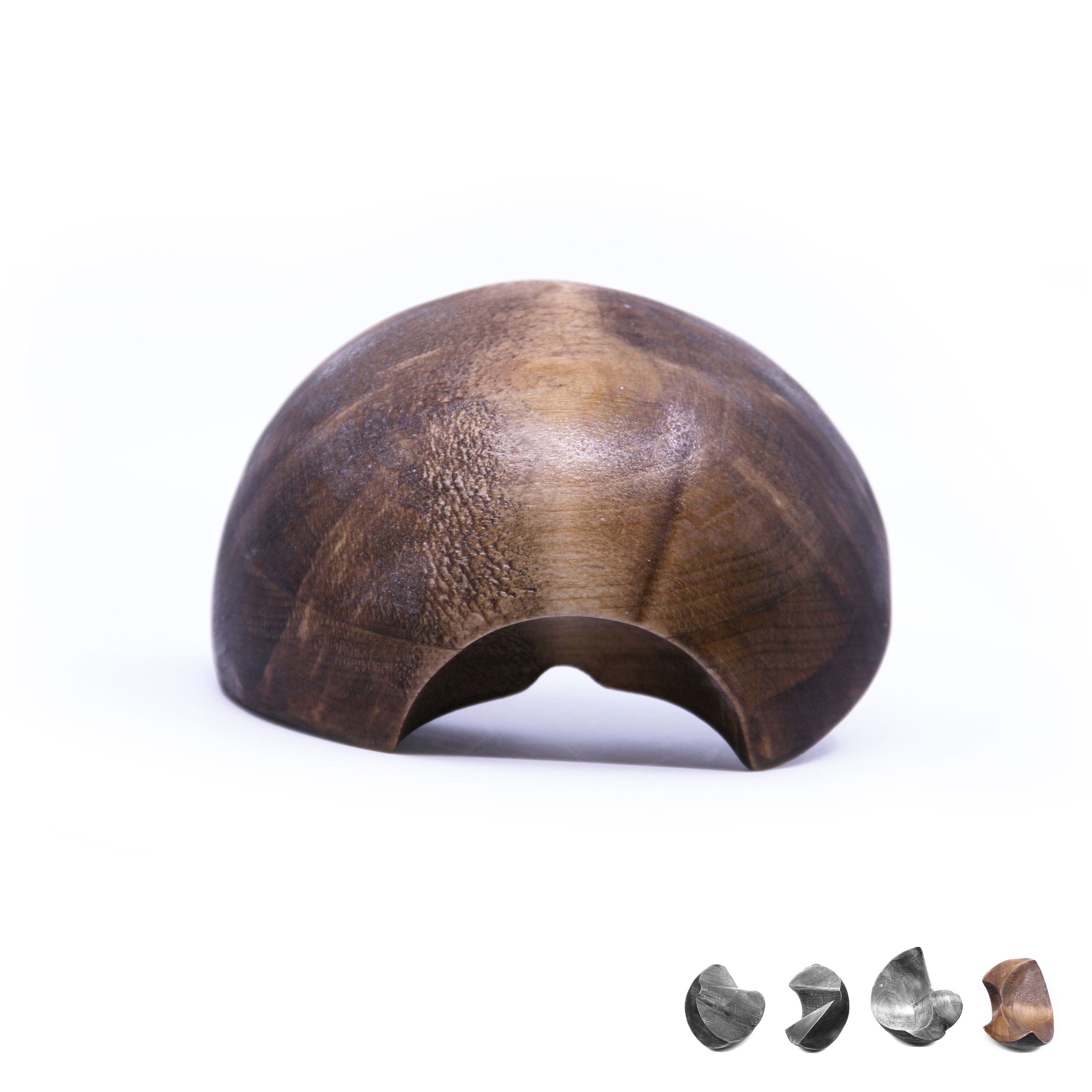Unranked Joinery
Contested Centers
Cambridge, MA
MIT, Geometric Disciplines
Instructor: J. Jih
Collaborators: Ginevra D’Agostino, Jinyoung Sim, Zhifei Xu
How can we design joinery without hierarchy?
Traditions of woodworking joinery utilize a two-part system, often positive/negative or major-minor. In this exercise, we explore a geometry where each discrete part of the whole challenges the order of the system. Though each unit expresses unique material and tectonic qualities, they offer equivalent performance in combination.

Milled Basswood Joinery

 Unrolled Assembly
Unrolled Assembly

A 45 degree helix surface splits and redistributes each form, dissolving hierarchy among the four members but maintaining the orientation about the central pivot.

The four members are aggregate in order of mass, meaning the heaviest anchors the assembly and gives orientation to the sphere.

As the assembly is materialized, new graphics emerge from the projection of wood grain orientation across geometric intersections.

Though the internal mechanical joinery is distinct in each of the four pieces, the set reads as a family due to the external spherical form.

The infinitesimal tangency between two spheres yields during machining, leaving a circular notch: an analog remnant of the 3/4” diameter routing bit.